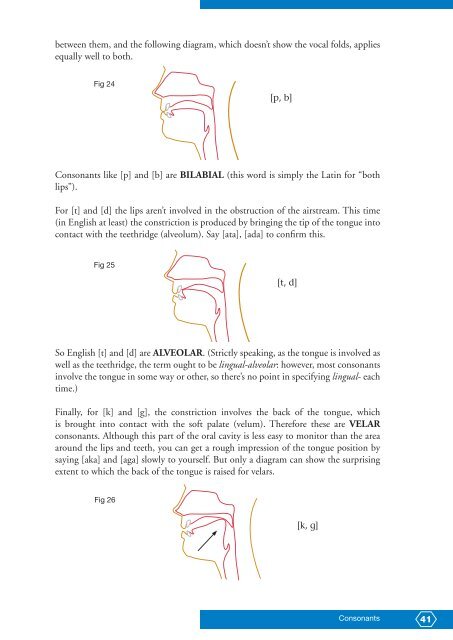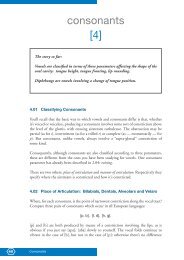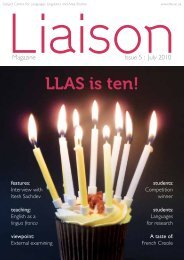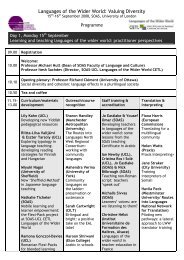PHONETICS MANUAL.indd - HumBox
PHONETICS MANUAL.indd - HumBox
PHONETICS MANUAL.indd - HumBox
You also want an ePaper? Increase the reach of your titles
YUMPU automatically turns print PDFs into web optimized ePapers that Google loves.
etween them, and the following diagram, which doesn’t show the vocal folds, applies<br />
equally well to both.<br />
Fig 24<br />
[p, b]<br />
Consonants like [p] and [b] are BILABIAL (this word is simply the Latin for “both<br />
lips”).<br />
For [t] and [d] the lips aren’t involved in the obstruction of the airstream. This time<br />
(in English at least) the constriction is produced by bringing the tip of the tongue into<br />
contact with the teethridge (alveolum). Say [ata], [ada] to confirm this.<br />
Fig 25<br />
[t, d]<br />
So English [t] and [d] are ALVEOLAR. (Strictly speaking, as the tongue is involved as<br />
well as the teethridge, the term ought to be lingual-alveolar: however, most consonants<br />
involve the tongue in some way or other, so there’s no point in specifying lingual- each<br />
time.)<br />
Finally, for [k] and [g], the constriction involves the back of the tongue, which<br />
is brought into contact with the soft palate (velum). Therefore these are VELAR<br />
consonants. Although this part of the oral cavity is less easy to monitor than the area<br />
around the lips and teeth, you can get a rough impression of the tongue position by<br />
saying [aka] and [aga] slowly to yourself. But only a diagram can show the surprising<br />
extent to which the back of the tongue is raised for velars.<br />
Fig 26<br />
[k, g]<br />
Consonants<br />
41






